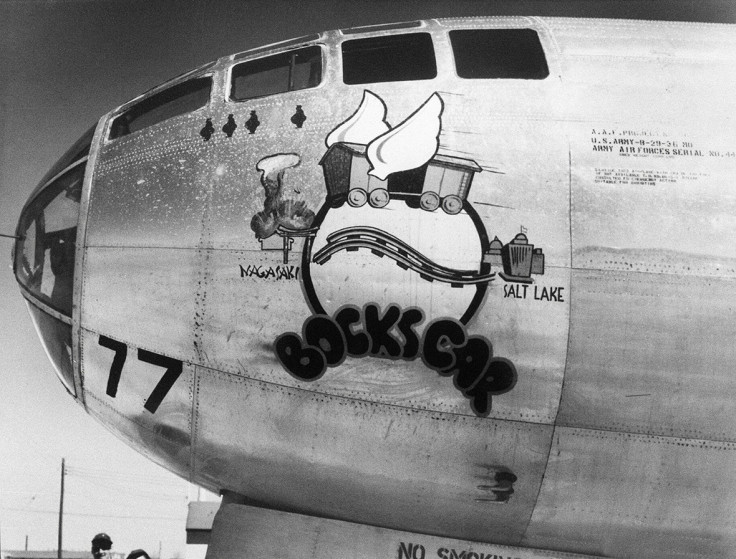Hiroshima and Nagasaki 70th anniversary: Facts, aftermath and damage of the first nuclear bombs used in war

Seven decades ago the Japanese cities of Hiroshima and Nagasaki were destroyed by an atomic attack by the US. Up to 200,000 lives are estimated to have been lost as a result of the two attacks carried out during the closing days of the Second World War, with the effects long-surpassing the immediate devastation.
Less than two weeks after US president Harry Truman issued the Potsdam Declaration – an ultimatum to Japan that the country would face "prompt and utter destruction" if it did not surrender – the direction of warfare changed forever.
What happened when the bombs were dropped?
On the morning of 6 August 1945, an American B-29 bomber, the Enola Gay, carrying 12 crew members released the bomb by parachute. The 4,400kg uranium-235 device exploded 1,900ft above the ground with an energy of 15 kilotons of TNT, releasing a blinding light followed by a fireball with a surface temperature of about 6,000C. Tens of thousands of people died instantly and fires consumed the city. The fires lasted for three days, trapping and killing many of the initial survivors of the blast.
Hiroshima was chosen as a target for the first atomic bomb because it had remained intact during the war, so ascertaining the effects of Little Boy – as the bomb was known – would be relatively easy. The city was also of significant military importance and had a high concentration of troops, military facilities and factories.
Three days after the first bomb was detonated over Hiroshima, the Allies released a second, larger device – Fat Man – over the Kyushu island city of Nagasaki. The original target was Kokura, a city which had been the backup target for the first bomb had Hiroshima been clouded over. On the morning of the 9 August, however, Kokura was obscured by clouds and smoke from the firebombing of the neighbouring city of Yahata.

As the mission commander Charles Sweeney had orders to drop the bomb visually, he diverted to the secondary target Nagasaki. Fat Man, a plutonium-based nuclear weapon, exploded two miles from its original target with a yield of 21 kilotons of TNT.
What were the effects of the blast?
Akihiro Takahashi, who died in 2011 aged 80, was 14 when the atomic bomb exploded over Hiroshima. He was standing in line with other students outside his school, about 1.4km from the epicentre of the blast.
"The heat was tremendous," he told the project Hiroshima-Remembered. "I felt like my body was burning all over. For my burning body the cold water of the river was as precious as the treasure. Then I left the river and I walked along the railroad tracks in the direction of my home.
"On the way, I ran into another friend of mine, Tokujiro Hatta. I wondered why the soles of his feet were badly burnt. It was unthinkable to get burned there. But it was undeniable fact the soles were peeling and red muscle was exposed."
In Nagasaki, the hilly topography of the city reduced the destruction to a 2.6 square mile radius. At least 40,000 people were killed immediately and fires raged through the hospitals, schools and homes, reducing about half of the city to rubble and ash. Some estimate the final death toll of both attacks reached up to 200,000, including those killed instantly, in subsequent fires and from exposure to radiation.

The exact number of deaths will never be known, but research into the effects of radiation sickness is ongoing. According to the Radiation Effects Research Foundation, a Japan-US project set up following the blasts, excess leukemia was the earliest delayed effect of radiation exposure seen in survivors of the bombings.
A new report by the International Committee of the Red Cross (ICRC) and the Japanese Red Cross Society has said survivors are still suffering from long-term health effects from the radiation 70 years on. "Initially, many medical experts expected the effect of radiation to diminish within 10 to 20 years. Contrary to this assumption, it is now clear that these atomic bombs have caused lifelong illnesses," a spokesperson for the ICRC said. "New cases of cancer and leukemia rates are still emerging and the number of atomic bomb survivors developing heart disease is rising."
On 14 August, Japan agreed to the Allies' terms of surrender. The announcement was made by Emperor Hirohito at noon the following day – the first time many Japanese citizens had heard his voice on the radio.
What happened at Hiroshima and Nagasaki framed the world's thinking about nuclear warfare, as campaigns against atomic weapons gained momentum. In 1945, the Federation of American Scientists was set up by scientists who worked on the Manhattan Project – the project that developed the first nuclear weapons – to promote international security and nuclear disarmament.
© Copyright IBTimes 2025. All rights reserved.





















